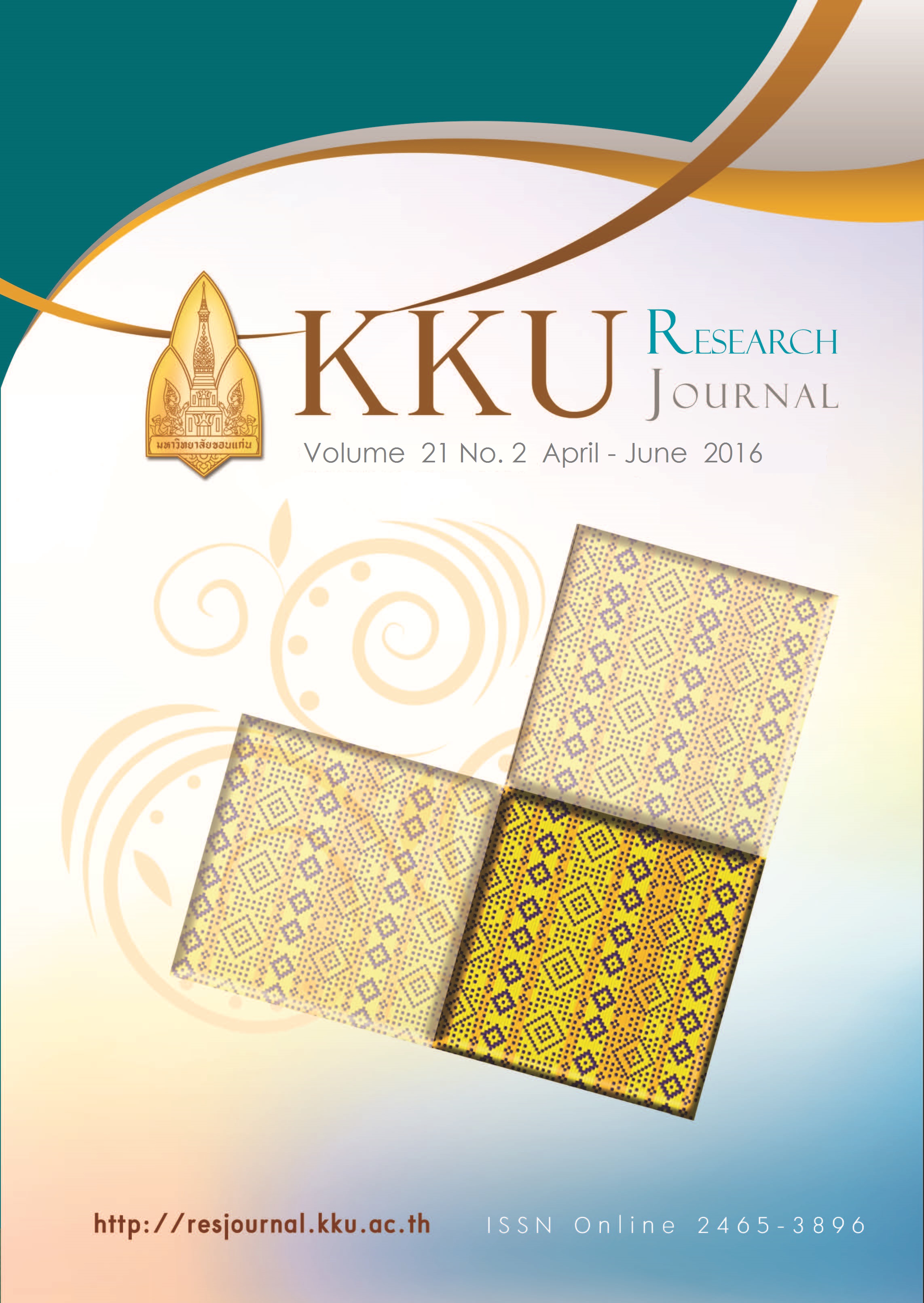Comparison of SHF and SSF processes for ethanol production from alkali-acid pretreated sugarcane trash
Main Article Content
Abstract
Sugarcane trash, an agricultural by-product, contained 16.21% neutral detergent soluble (NDS), 38.43% hemicellulose, 34.06% cellulose, 5.51% lignin and 5.79% ash on dry solid (DS) basis. After it was pretreated with 2%w/v NaOH followed by 2%w/v H2SO4 in autoclave (121oC, 15 min), the content of cellulose, hemicellulose and lignin were 73.17%, 7.21% and 3.41%, respectively. The pretreated sugarcane trash was used as substrate for ethanol production in separate hydrolysis and fermentation (SHF) and simultaneous saccharification and fermentation (SSF) processes, using commercial cellulase and Saccharomyces cerevisiae TISTR 5596 cells. The optimum conditions in a flask scale of SHF process (15% w/v substrate loading hydrolyzed with cellulase 50 FPU/g DS at 50oC, pH 5.0 and fermentation at 30oC), and SSF process (20%w/v substrate loading, cellulase 50 FPU/g DS, hydrolysis and fermentation at 35oC,pH 5.0) were applied to compare the ethanol production in a fermenter. In the SSF process, the highest level of ethanol production was 57.75 g/L, which was 16.26% higher than that of SHF process (48.36 g/L). The SSF process was therefore provided a more efficient method for the utilization of sugarcane trash.
Article Details
References
[2] Reddy PM, Spiller H, Albrecht SL, Shanmugam KT. Photodissimilation of fructose to H2 and CO2 by a dinitrogen-fixing cyanobacterium, Anabaena variabilis. Appl Environ Microbiol. 1996 Apr;62(4):1220-6.
[3] Srinorakutara T, Suttikul S, Butivate E, Panphan V, Boonvitthya N. Optimization on Pretreatment and Enzymatic Hydrolysis of Sugarcane Trash for Ethanol Production. J. Food Sci. Eng. 2014; 4: 148-154.
[4] Srinorakutara T, Suttikul S, Kanhanont T, Siriniwatkul J. Simultaneous Saccharification and Fermentation of Alkali-Acid Pretreated Sugarcane trash to Ethanol. Proceedings of The 26th Annual Meeting of the Thai Society for Biotechnology and International Conference. 2014; 26-29 November; Thailand (conference paper)
[5] Van Soest PJ, Robertson JB, Lewis BA. Method of dietary fiber, neutral detergent fiber, and nonstarch
polysaccharides in relation to animal nutrition. J. Dairy Sci. 1991; 74:3583-3597.
[6] Miller GL. Use of dinitrosalicylic acid reagent for determination of reducing sugar. Anal. Chem. 1959; 31:426-8.
[7] Ghose TK. Measurement of cellulose activity. Pure Appl. Chem. 1987; 59 : 257-68.

